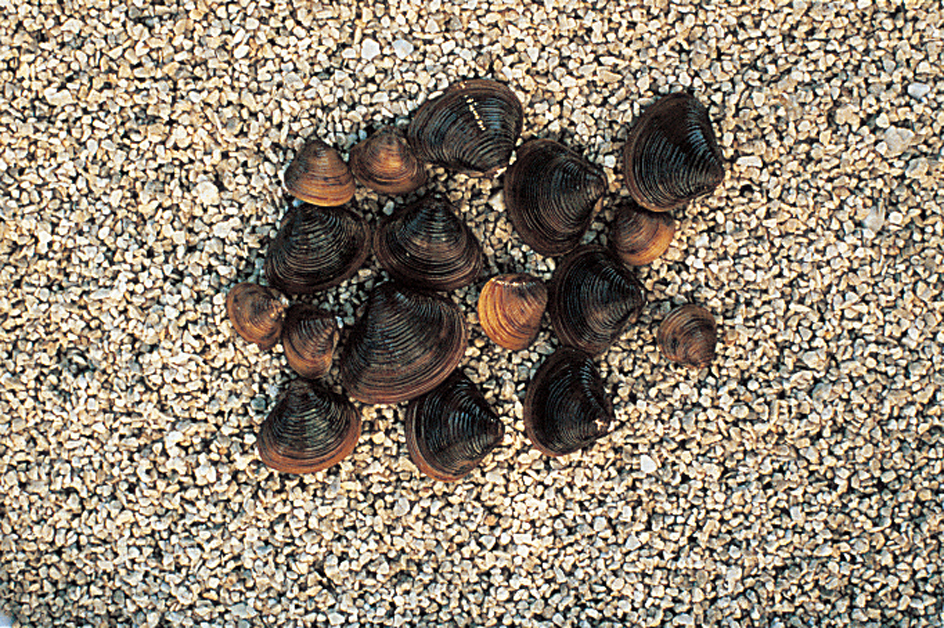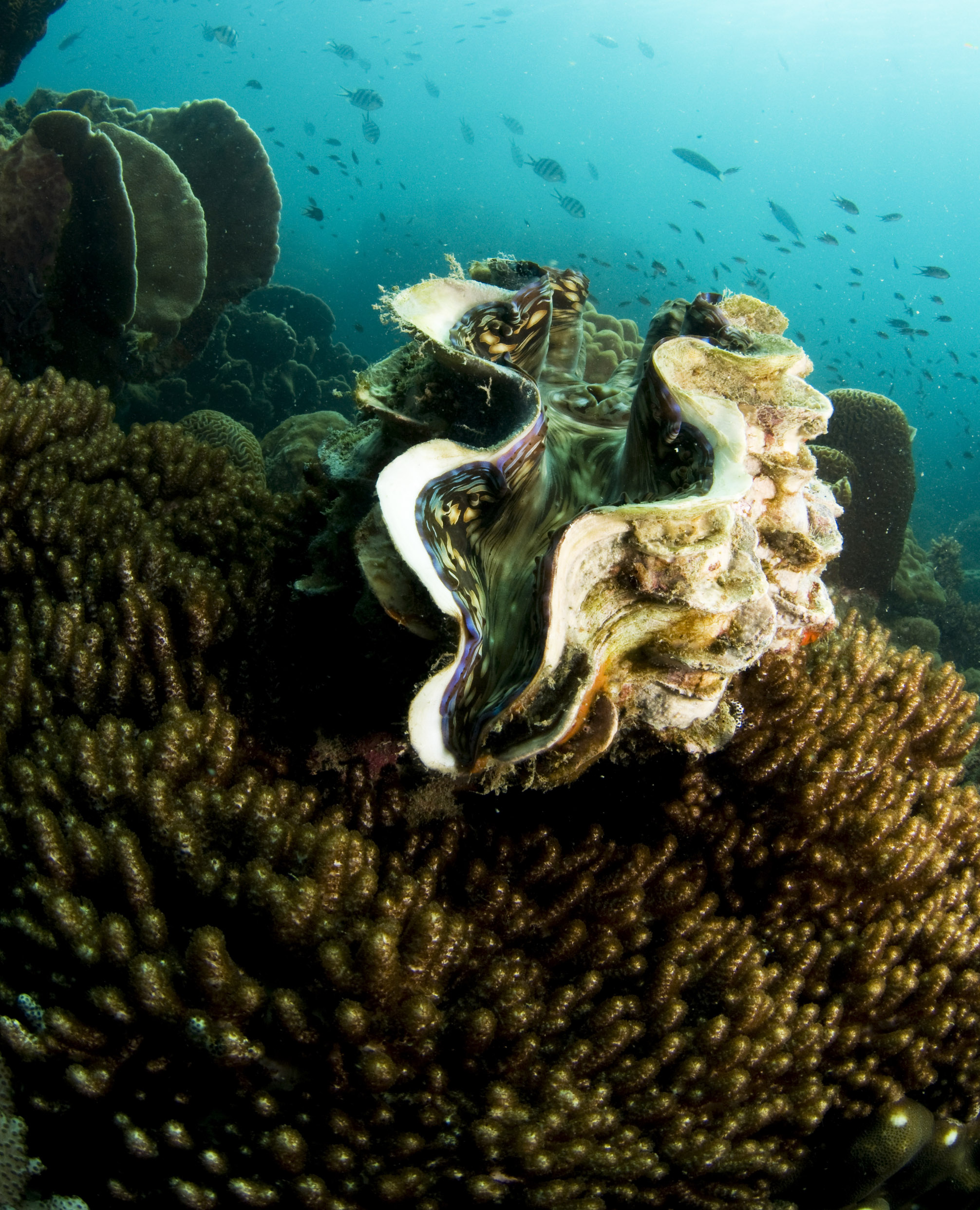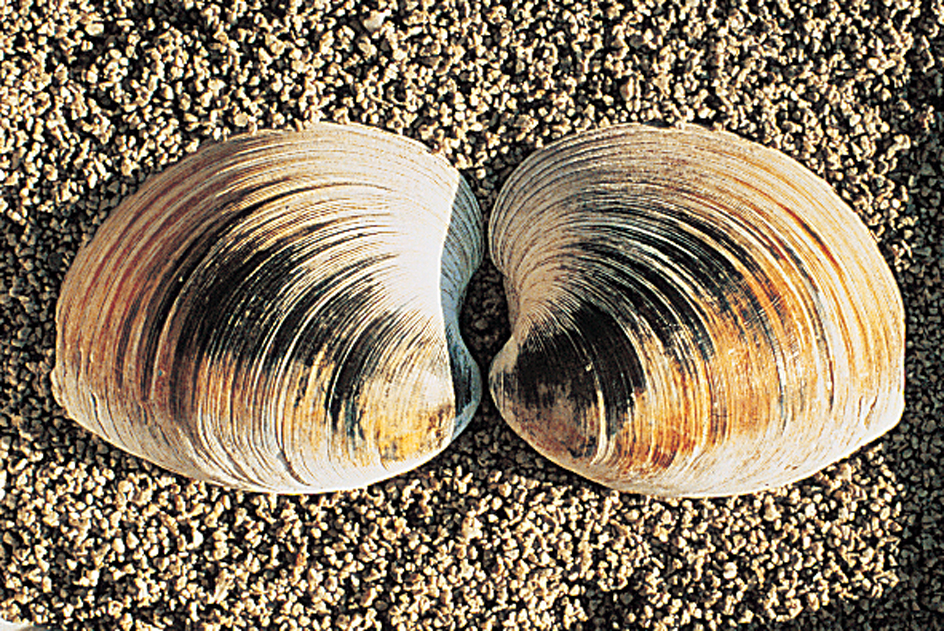Clam is an animal whose soft body is covered with a protective shell. Clams live on the bottoms or along the shores of oceans, lakes, and streams in many parts of the world. Clams are a type of mollusk, a group of soft-bodied animals that have no bones (see Mollusk (Bivalves)).

The body of a clam.
Clams use a large, muscular organ called a foot to burrow in mud or sand. The clam’s shell is made up of two parts called valves. A ligament connects the valves. Adductor muscles cause the valves to open and close.

The mantle, a thin, fleshy part of the body just inside the shell, produces substances that form the shell. Clam shells are composed chiefly of calcium carbonate, a major component in limestone. In many shells, a smooth, shiny substance called mother-of-pearl or nacre forms an inner layer.
The space between the main body of the clam and the mantle is called the mantle cavity. Clams have gills that hang into the mantle cavity. In most clams, water filled with food and oxygen passes into the mantle cavity through two openings called siphons. Water enters through the incurrent siphon, passes through the gills, and exits through the excurrent siphon. The clams breathe by using their gills to take oxygen from the water and release carbon dioxide back into the water.
Small, hairlike parts called cilia cover the gills. Food particles are usually trapped on the gills and are carried by the cilia to a small mouth. The mouth leads to the stomach, where food is partly digested. The clam completes digestion in digestive glands, which hang off the stomach. Waste travels out through the clam’s intestine. Clams have a heart, blood vessels, and kidneys.
The life of a clam.
Most clams feed on tiny water organisms called plankton. Some clams obtain food from the mud or sand in which they live. Other clams feed on small, shrimplike animals.
Clams reproduce sexually. In most species, each clam is either male or female. Males release sperm, and females release eggs. The sperm unite with and fertilize the eggs in the surrounding water or in the gills of the female. Fertilized eggs of most clams develop into tiny, swimming larvae called veligers. Veligers eventually become mature clams. In some species of clams, the same individual produces both sperm and eggs.
Types of clams.
Several types of clams are valuable as food. These types include such saltwater species as the hard-shell clam and the soft-shell clam. Hard-shell clams are harvested along the Atlantic coasts of Canada and the United States. Soft-shell clams have a smooth, thin shell. They are found on tidal flats from South Carolina to Greenland. Soft-shell clams from the mudflats of New England are especially popular.


The giant clam is the largest clam. It can reach more than 4 feet (1.2 meters) long and weigh about 550 pounds (250 kilograms). It lives on coral reefs in much of the Indian and southwestern Pacific oceans. The giant clam has become rare in some areas, mainly because of overfishing and habitat loss.

The Asian clam is an abundant type of freshwater clam. It was brought to North America from China in the 1930’s. Today, many Asian clams live in cooling systems of power plants. Sometimes there are so many that they slow the necessary waterflow and cause severe damage.
